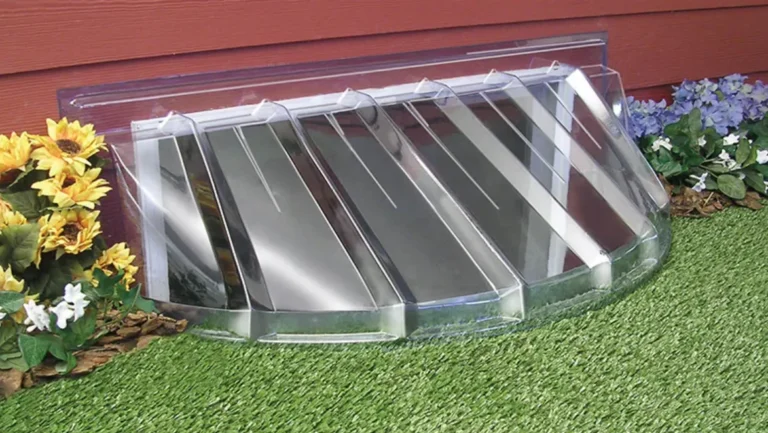Comparing Different Types of Water Tanks: GRP, Plastic, and Steel
Water tanks are an integral part of various projects, from residential and commercial buildings to industrial facilities. Choosing the right type of water tank is crucial for ensuring reliable performance, durability, and cost efficiency. With several materials available GRP (Glass Reinforced Plastic), plastic, and steel it’s important to evaluate their advantages, disadvantages, and applications to make an informed decision.
This guide serves as a comprehensive comparison of GRP, plastic, and steel water tanks, helping construction professionals, engineers, and homeowners determine the best option for their needs.
GRP Tanks
What Are GRP Tanks?
GRP (Glass Reinforced Plastic) tanks are made from a composite material consisting of glass fibers embedded in a resin matrix. This construction provides high strength while keeping the tank lightweight. GRP tanks are known for their resistance to corrosion and adaptability to diverse environments.
Advantages of GRP Tanks
- Corrosion Resistant: Unlike metal tanks, GRP tanks do not rust or corrode when exposed to water or chemicals, making them ideal for storing various liquids.
- Lightweight: Their lightweight nature simplifies transport and installation, reducing labor and equipment costs.
- Design Flexibility: GRP tanks can be molded into various shapes and sizes, catering to specific project requirements.
- Low Maintenance: GRP tanks require minimal upkeep due to their durability and resistance to wear and tear.
Disadvantages of GRP Tanks
- Higher Initial Cost: GRP tanks are typically more expensive than plastic alternatives, which may deter budget-conscious buyers.
- Complex Repairs: If damaged, GRP tanks often require specialized repair techniques and expertise, leading to additional costs.
Applications of GRP Tanks
GRP tanks are widely used in industries where corrosion resistance and lightweight are critical, including:
- Water treatment plants.
- Chemical processing facilities.
- Fire safety systems.
- Rainwater harvesting.
Plastic Tanks
What Are Plastic Tanks?
Plastic water tanks are typically made from high-density polyethylene (HDPE) or other polymer materials. They are favored for their affordability, simplicity, and broad accessibility.
Advantages of Plastic Tanks
- Low Cost: Plastic tanks are highly economical, making them an appealing choice for homeowners and small businesses.
- Easy Installation: Lightweight and portable, plastic tanks can be installed quickly and with minimal effort.
- Chemical Resistance: Suitable for storing a variety of liquids due to resistance to chemical reactions and leaching.
Disadvantages of Plastic Tanks
- Limited Pressure and Temperature Resistance: Plastic tanks are unsuitable for high-pressure or extreme-temperature environments.
- Environmental Concerns: While many modern plastic tanks are recyclable, their production and disposal can contribute to environmental issues.
- Shorter Lifespan: Plastic tanks tend to have a shorter operational life compared to GRP or steel.
Applications of Plastic Tanks
Plastic tanks are commonly used in:
- Domestic water storage.
- Irrigation systems for agriculture.
- Septic systems and wastewater management.
- Temporary liquid storage on construction sites.
Steel Tanks
What Are Steel Tanks?
Steel water tanks are constructed from materials like carbon steel or stainless steel. Renowned for their strength and resilience, steel tanks are ideal for demanding applications.
Advantages of Steel Tanks
- High Strength and Durability: Steel tanks are robust, suitable for high-pressure and heavy-duty applications.
- Temperature Resistance: Unlike plastic tanks, steel tanks can handle extreme temperatures, making them useful in harsh environments.
- Long Lifespan: With proper maintenance, steel tanks can last for decades.
- Recyclability: Steel is one of the most recyclable materials, contributing to environmental sustainability.
Disadvantages of Steel Tanks
- Corrosion Potential: Unless made of stainless steel or coated, steel tanks can rust over time when exposed to moisture.
- Heavy Weight: Steel tanks are considerably heavier than GRP or plastic options, complicating transport and installation.
- Higher Costs: Steel tanks usually involve higher initial and installation costs compared to their plastic and GRP counterparts.
Applications of Steel Tanks
Steel tanks are typically used in:
- Industrial facilities requiring high-pressure liquid storage.
- Municipal water supply systems.
- Oil and gas storage and transport.
- Large-scale agricultural operations.
Comparative Analysis
To help you make an informed decision, here’s a side-by-side comparison of GRP, plastic, and steel tanks based on key factors.
Performance
- Pressure Resistance:
- Steel tanks excel under high-pressure scenarios.
- GRP tanks are moderately pressure-resistant but less so than steel.
- Plastic tanks are best suited for low-pressure environments.
- Temperature Resistance:
- Steel tanks are highly temperature-resistant.
- GRP tanks offer moderate resistance.
- Plastic tanks are prone to deformation under extreme temperatures.
- Corrosion Resistance:
- GRP and plastic tanks are highly resistant to corrosion.
- Steel tanks need special coatings or stainless-steel construction to prevent rust.
- Lifespan:
- Steel tanks typically last the longest, followed by GRP, and then plastic.
Cost
- Initial Cost:
- Plastic tanks are the cheapest.
- GRP tanks are more expensive than plastic but less costly than steel.
- Steel tanks generally have the highest initial cost.
- Installation Cost:
- Plastic and GRP tanks are easy and inexpensive to install.
- Steel tanks involve higher installation costs due to their weight and complexity.
- Maintenance Cost:
- GRP tanks require minimal maintenance.
- Plastic tanks may need periodic replacements.
- Steel tanks need rust-proof coatings and occasional repairs.
Environmental Impact
- Recyclability:
- Steel is the most recyclable material.
- GRP tanks have moderate recyclability.
- Plastic tanks are recyclable, but their production and decomposition pose environmental challenges.
- Carbon Footprint:
- Plastic tanks have the highest carbon footprint due to manufacturing processes.
- GRP tanks have a moderate carbon footprint.
- Steel tanks are eco-friendly when made from recycled materials.
Real-World Applications
Several industries rely on these materials based on specific needs:
- Industrial Scenario:
- An oil refinery chooses steel tanks for storing high-volume crude oil under high pressure.
- Residential Application:
- A homeowner opts for a plastic tank to store rainwater for gardening.
- Commercial Use:
- A chemical company uses GRP tanks to store corrosive liquids without risk of contamination.
Choosing the Right Tank for Your Needs
Selecting the right water tank depends on understanding your specific requirements, such as the application, budget, and environmental considerations. While GRP tanks offer corrosion resistance and flexibility, plastic tanks are the go-to for affordability and ease of installation. Steel tanks, on the other hand, are the preferred choice for high-pressure, heavy-duty applications.
For an eco-conscious and cost-effective decision, be sure to evaluate not only the tank’s upfront cost but also its lifespan, environmental impact, and maintenance needs.
Need help deciding? Contact our team of experts for personalized advice on selecting the perfect water tank for your project.







